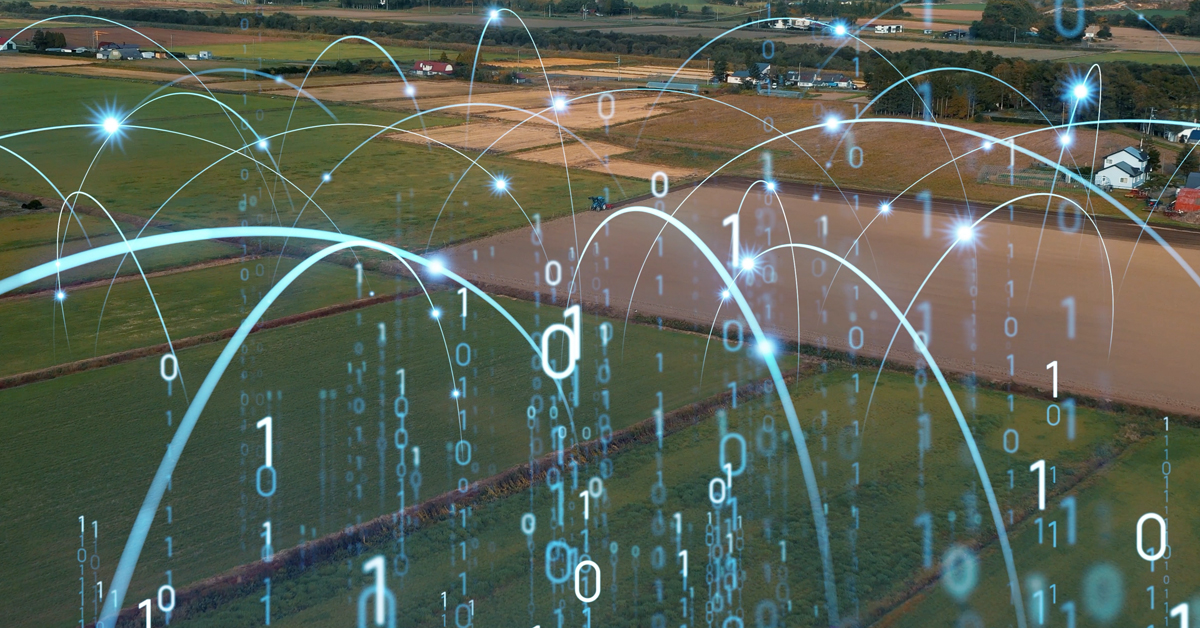
Agricultural technology is on the rise and in the mainstream news. Stories of lab-grown meat, fruit-picking robots and megadeals pumping billions of dollars into the sector are catching the public’s imagination. Whether individual consumers love or hate the prospects of a digital food future, it seems inevitable that one of the next big waves of innovation will be the application of digital tools to food and farming systems.
This “Farming 4.0” is poised to be incredibly disruptive. Giant fermentation vats that produce dairy proteins, “smart” tractors that know where they are in the field and drive themselves to plant and harvest, or biodegradable packaging that changes colour when food spoils all point to the future of food.
The promise of this revolution is nothing short of miraculous, and proponents believe these tools will allow humanity to produce more food on less land, reduce waste and pollution, protect biodiversity and create jobs. Other experts, however, caution that if history is anything to go by, technological revolutions typically result in greater inequality as the rich capture most of the benefits.
We can learn from other sectors. As surely as ride-sharing has crushed the value of taxi medallions, new ways of producing food will wash over industries still using technologies that would feel familiar to their grandparents. In all likelihood, we can’t stop the disruption, but we can control how these changes impact Canadians.
Here are four suggestions we think will help put our country on the right path.
First, one of the hoped-for benefits of the digital agricultural revolution is that it should reduce the environmental footprint of our food system. However, to ensure that technologies are used for such laudable ends, it is necessary to create what academics call “eco-fiscal incentives.” This is also sometimes called “payment for ecosystem services” and includes programs such as carbon markets that provide financial rewards to farmers who conserve biodiversity, sequester carbon or protect wetlands. Having a policy regime that puts a monetary return on protecting the environment is a necessary precursor to ensuring that digital technologies will be applied in the right way.
Second, we need a new approach to training the next generation of farmers and agri-food workers. We know there are good jobs in the sector, and that the traditional agricultural disciplines of soil, crop and food science are necessary. But since the agricultural system of the future will also be driven by data, we also need our future farmers to be trained in the STEM disciplines of science, technology, engineering and math.
Simply bringing STEM and agricultural science together, however, won’t be enough and things are changing so fast that we also need to train our future agri-food experts to be resilient, innovative and entrepreneurial. This means we need to train agri-science/STEM students in foundational skills of conflict resolution, active listening, critical thinking, as well as oral and written communication. But bringing three very disparate pedagogies together is no mean feat and will challenge our universities and colleges.
Third, because food touches so many aspects of our lives, developing policies for it requires a whole-of government approach. After all, food comes from farms and so naturally sits within agricultural ministries and departments. But food is also a matter of trade, science, innovation, economic development and health.
As a result, we need to ensure that the policy discussions around agriculture and food expand out of agricultural departments and ministries, and also explicitly include departments of science and technology, jobs and training, as well as those departments responsible for things such as health, communities and environment. In this regard, the recent announcement by the minister of Agriculture and Agri-Food Canada about the creation of the first Canadian Food Policy Advisory Council, which includes representation from the entire “farm-to-fork” continuum, is an excellent step in the right direction. This sort of collaborative and cohesive governance mechanism needs to be embraced by all levels of government and become the norm.
Finally, since data is the lifeblood of the digital agricultural revolution, we need all Canadians – and especially those in rural areas who produce most of our food – to have access to quality, reliable, affordable and fast broadband connections. This is imperative if we have any hope of realizing the benefits of this tidal wave of innovation.
We’ve been watching the deployment of digital agricultural tools for the last five years. Even as academics working in the field, we are amazed at how the speed of change has accelerated dramatically over the last 18 months. Innovations that seemed decades away are suddenly appearing on store shelves and in consumer’s kitchens.
The pandemic, which has focused so much attention on issues related to labour and trade, has acted like an accelerant, throwing the proverbial gasoline on the fire. While it is exciting to be witnessing what may end up being one of the most profound technological shifts in human history, it is critical that society act now to create the policy and regulatory frameworks needed to ensure this revolution ends up creating widespread social and environmental benefits.
This article is part of the Digital Connectivity in the COVID Era and Beyond special feature.











